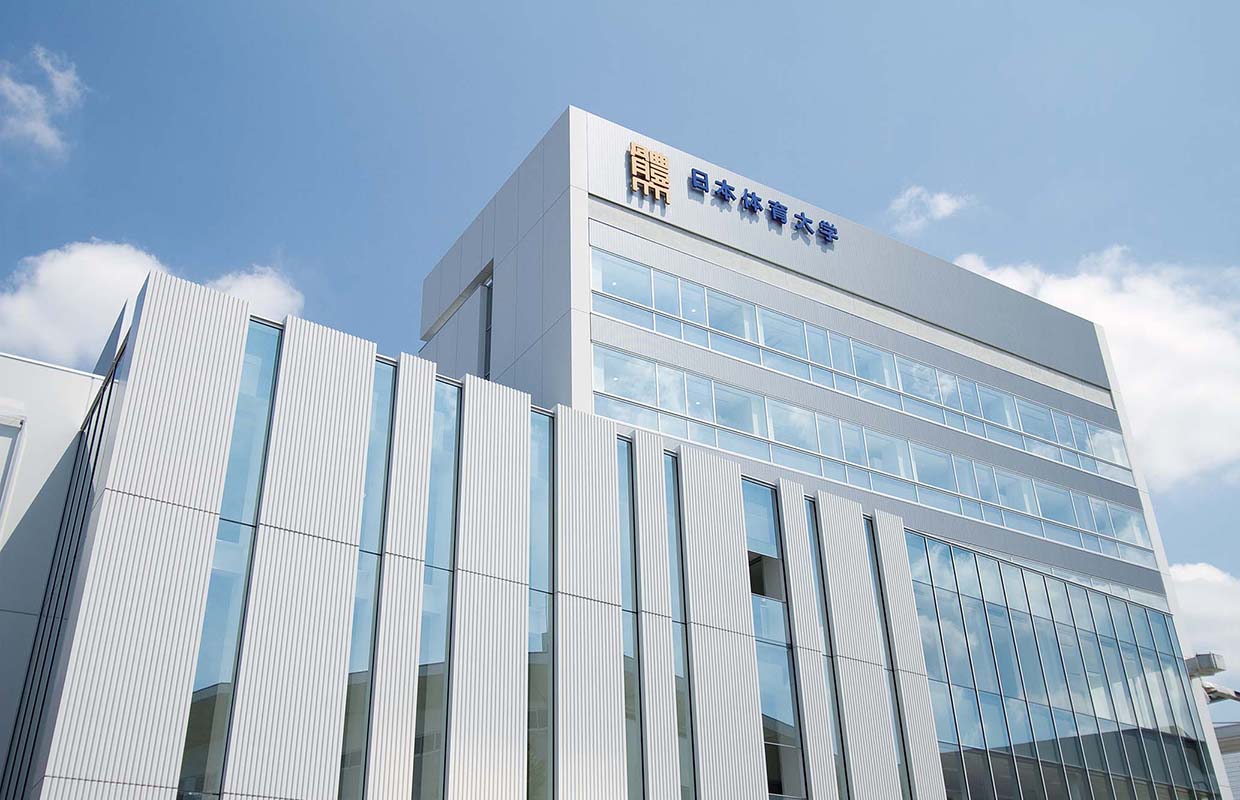Tokichiro Hidaka born in Horigome-go, Sano-machi, Tochigi-ken.
The NSSU founder Tokichiro Hidaka was born in Horigome-go, a village near Sano-machi, Tochigi-ken in 1857 (Ansei 4) in the late Edo Period. After losing his father to death at an early age and being adopted by one of his relatives, Hidaka would join the Army at the age of 17 and fight in the Seinan War and other deployments.His combat experiences from those years brought Hidaka to a stark realization of how significantly deficient the Japanese were in physical fitness and strength and that the military officers lacked the crucial capacity to effectively command their troops.
After being discharged from the Army in his late 20s, Hidaka established Bunbu Koshukan (the predecessor organization of Seijo Gakko which would become Seijo Junior and Senior High Schools of today) in 1885 (Meiji 18) as an auxiliary educational institution to the military academies, based on his firm belief that physical education would be a key to building a robust nation. In 1891 (Meiji 24), Hidaka also used his personal funds to establish Taiikukai (the Association of Physical Education; renamed NipponTaiikukai(the Japan Association of Physical Education) the following year) and devoted himself to continuously improving and expanding the institution, the status of which would be switched from a private entity to a public incorporated association in 1901 (Meiji 34). Hidaka passed away at the age of 76 in 1932 (Showa 7).
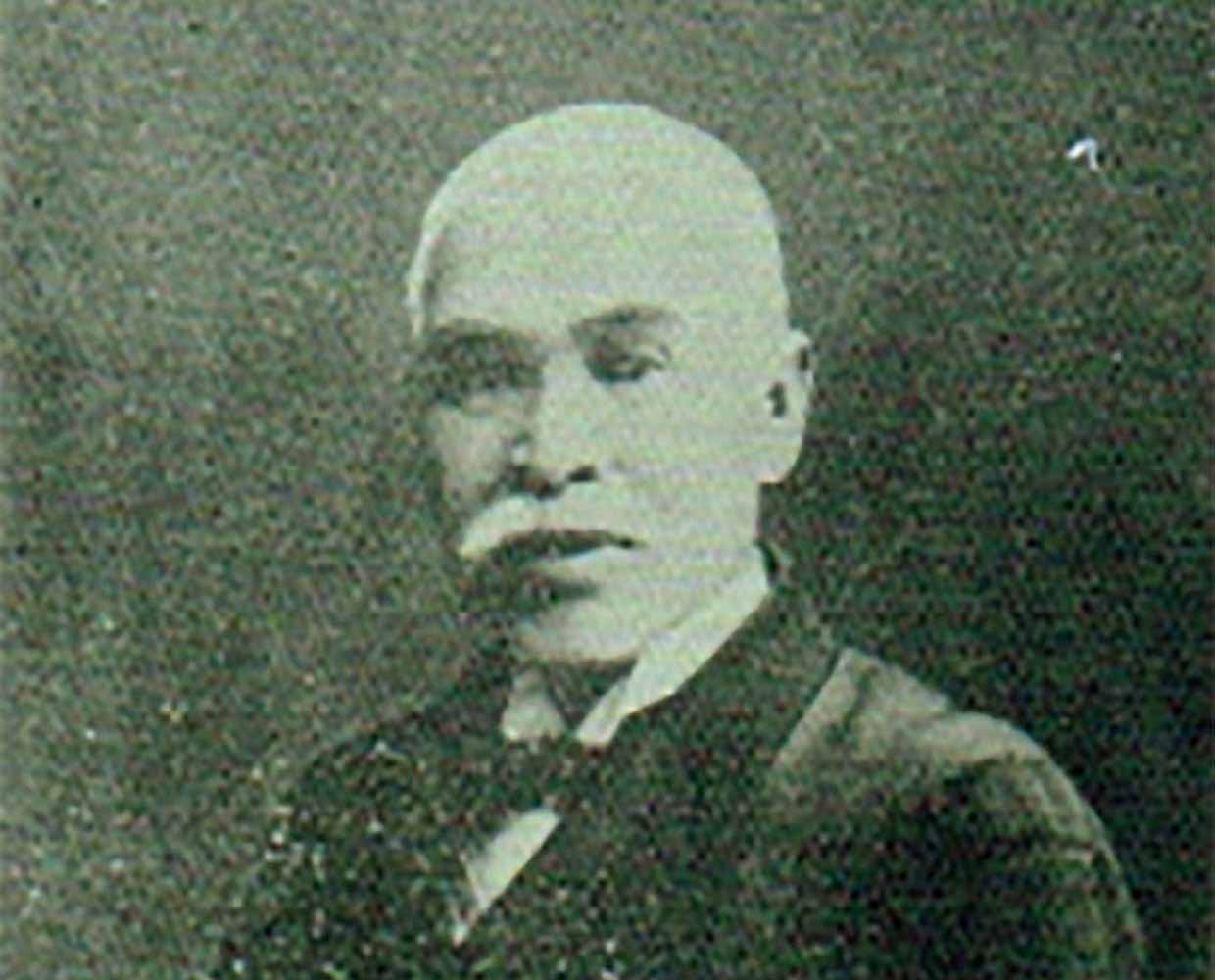
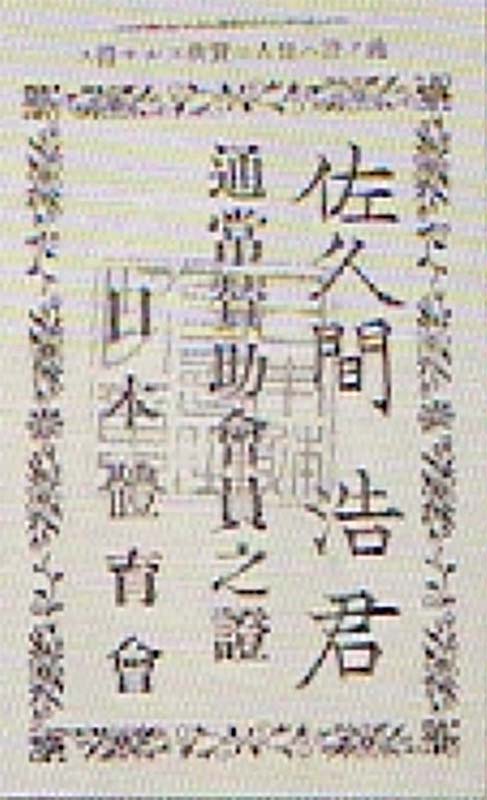
Tokichiro Hidaka establishes Taiikukai in Ushigome-ku, Tokyo-shi.
In the late 19th century, the world was increasingly becoming dominated by imperialism as manifested by the European and American powers. To maintain Japan’s sovereignty amidst such turmoil and to lead Asia’s modernization efforts, the Meiji Government declared its policy of fukoku-kyohei (enrich the Country, strengthen the Armed Forces) and shokusan-kogyo (industrial development). To support this policy from the private sector, Tokichiro Hidaka founded Taiikukai (the Association of Physical Education; renamed NipponTaiikukai(the Japan Association of Physical Education) the following year) in 1891 (Meiji 24).The following is an excerpt fromTaiikukai Setsuritsu no Yoshi(Purpose of Establishing Taiikukai) that Hidaka himself authored.
*****
Unless its physical health is sound, one cannot attain its mental fortitude. Unless it possesses its mental fortitude, one cannot endure challenging circumstances to accomplish its goals. Furthermore, if one desires to achieve physical health, there is no better way than to exercise its body. (Omitted.) The importance of physical education is already understood as such. In other words, I believe promotion of physical education will endow the citizens with more toughness, so it must be the most basic approach to enriching and strengthening our nation.
*****
The initial goal that Nippon Taiikukai had set out to achieve for improving the citizens’ physical fitness and strength was to set up members-only groups that are akin to the sports clubs that exist across Japan today. As Hidaka was fluent in the German language, he apparently modeled it after the athletic clubs (turnvereins) that were popular in Germany at the time. Nippon Taiikukai also took part in the National Industrial Exhibition on three separate occasions, where it built and exhibited its sogo-taiiku-kaikan (general gymnasium).
However, this pioneering enterprise that Hidaka had introduced was perhaps too early for the time, as its membership fee collection hit a snag and the operation could not achieve financial stability. Therefore, Nippon Taiikukai essentially had to simplify its scope of business and refocus its resources on the school operation.
Nippon Taiikukai constructs its Taiso-Renshujo (gymnastics practice facility) in 4-chome, Iidamachi, Kojimachi-ku, Tokyo-shi.
In 1893 (Meiji 26), Nippon Taiikukai built its Taiso-Renshujo (gymnastics practice school) with the aim of providing exclusive training to its registered members to become physical education specialists, which would also serve as an auxiliary institution for physical education instructors teaching at schools. This facility was the predecessor organization of what we come to know as Nippon Sport Science University today. The Meiji era also saw the opening of many other privately-run gymnastics instructor training schools, but most of them would disappear before long.The main reason the Nippon Taiikukai Taiso-Renshujo was able to survive and thrive through those challenging times was because it was able to win the trust and support of the government. As Nippon Taiikukai was able to invite PrinceKan’inKotohito from the Imperial Family to assume the post of the institution’s president, and a high-ranking military officer and a kazoku (noble class) member to the posts of chairperson and vice-chairperson, it was able to receive a government subsidy for five years starting 1899 (Meiji 32).
The government was also in need of a successfully-run institution like NipponTaiikukai’sTaiso-Renshujo to take over the national physical education instructor training function, after the Taiso-Denshujo (gymnastics training center) that was established by the Ministry of Education, Science and Culture (in 1878 (Meiji 11); the predecessor organization of the School of Physical Education, Health and Sport Sciences at the University of Tsukuba) had been abolished, and its successor, the Higher Normal School’s gymnastics specialization course, that was delegated the function of training physical education instructors also discontinued the program in 1889 (Meiji 22).
Through these series of events, NipponTaiikukai’sTaiso-Renshujo would become a de facto quasi-national institution, and joined the ranks of organizations that were under the direct supervision of the Ministry of Education, Science and Culture. In 1900 (Meiji 33), the institution was renamed Nippon Taiikukai Taiso Gakko (the Japan Association of Physical Education Gymnastics School).
The construction of new buildings atUshigafuchi, 1-chome, Iida-machi, Kojimachi-ku finishes, and Taiso-Renshujo (gymnastics practice facility) and Mohan-Taisojo (exemplar gymnastics facility) relocate.
Taiso-Renshujo was renamed Nippon Taiikukai Taiso-Gakko (Physical Exercise School of Nippon Taiikukai) and was reclassified as miscellaneous school under the supervision of the Minister of Education, Science and Culture. The institution offered a one-year primary course and a six-month secondary course.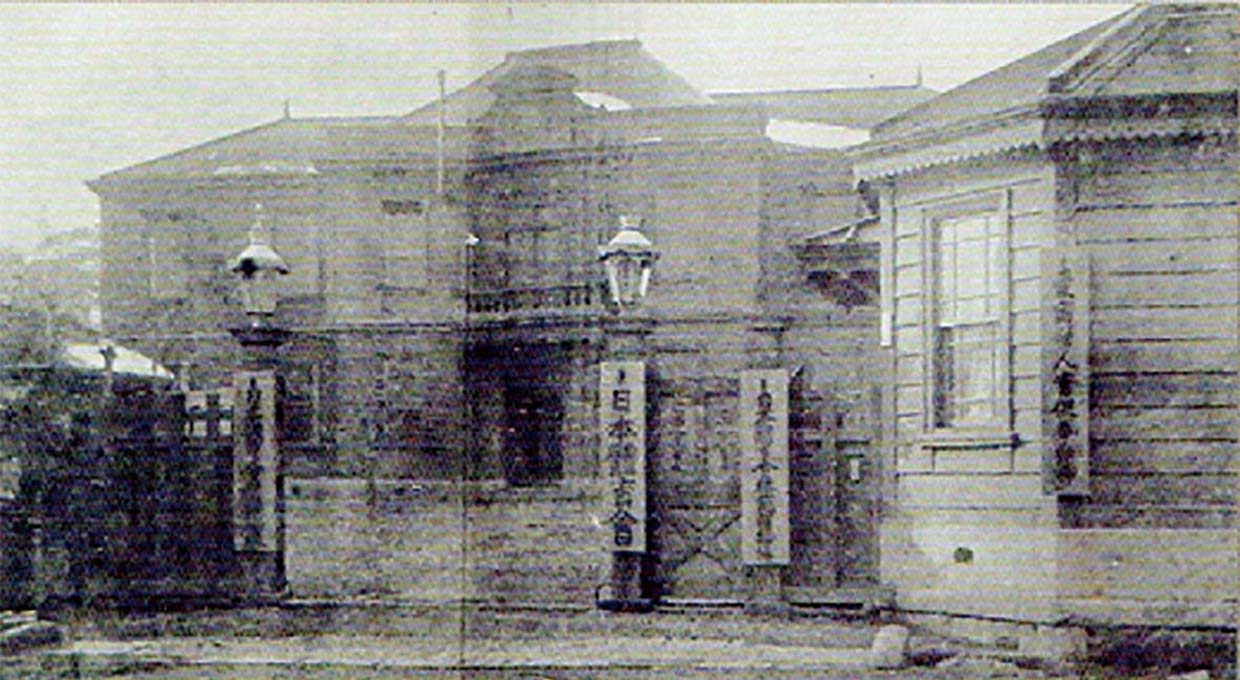
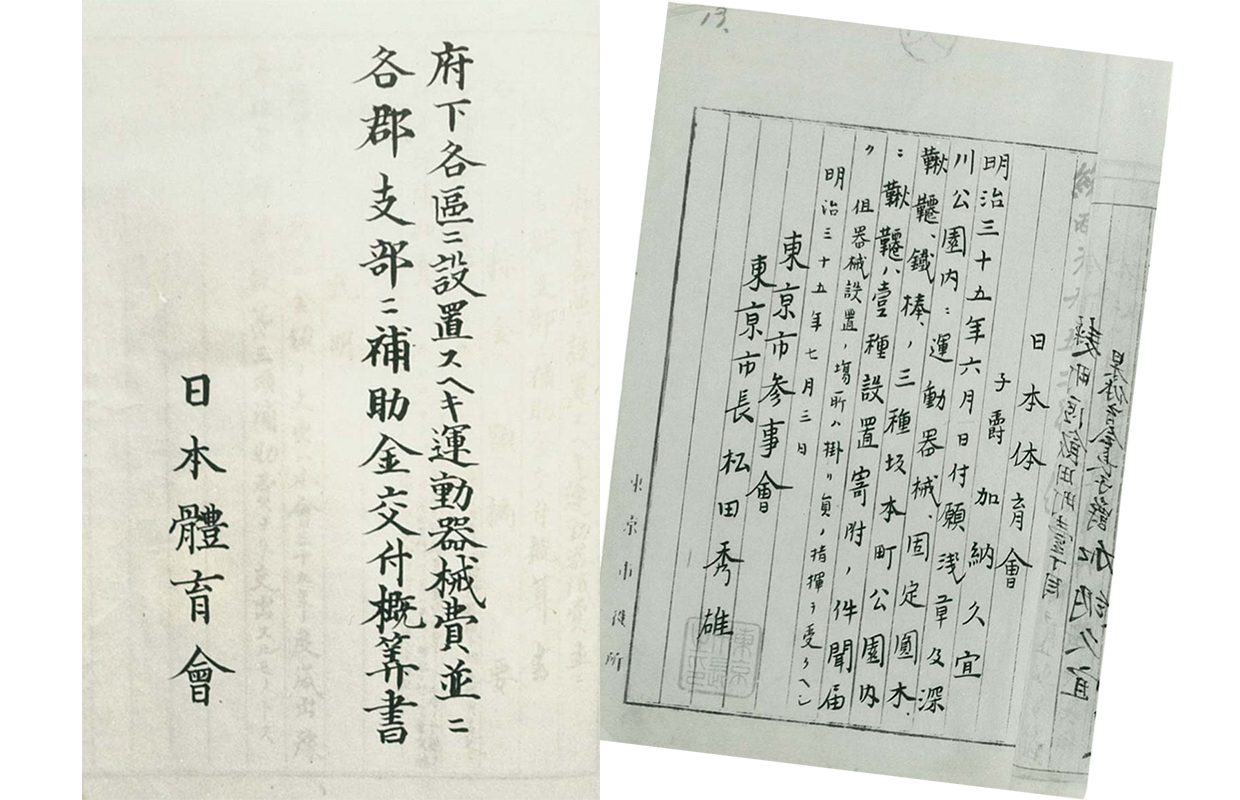
Nippon Taiikukai installs exercise equipment in Hibiya Park to promote physical exercise among the general public.
Nippon Taiikukai allowed the public to freely use its physical exercise facilities to promote the understanding and practice of essential physical education. The institution’s such move set a good example that would be emulated by other educational institutions and turned into the current practice of schools opening up their physical exercise facilities for use by the general public.As Nippon Taiikukai management was eager to provide more spaces where people could freely exercise, it applied for a subsidy with the Tokyo-fu government and installed three to four pieces each of exercise equipment in parks in Ueno, Shiba, Asakusa, Fukagawa, and Nihonbashi in 1902 (Meiji 35), before setting up large-scale exercise equipment set in Hibiya Park in 1903 (Meiji 36). Many youths flocked to those parks and started enjoying physical exercise more casually with the equipment.
Relocation to Oi-mura, Ebara-gun
Although the institution had been promoted to Nippon Taiikukai Taiso-Gakko (Physical Exercise School of Nippon Taiikukai), the five-year national subsidy was not renewed at the end of the period, which significantly compromised the institution’s financial standing. To address the situation, Nippon Taiikukai left central Tokyo and moved to Hamakawa, Oi-machi, Ebara-gun, Tokyo-fu in 1904 (Meiji 37), marking the dawn of the Oi era for the institution.Due to its remote location, the number of applicants to the school dropped significantly, which pushed it to the brink of bankruptcy. However, as the Russo-Japanese War broke out, gymnastics (physical education) instructors, the majority of whom were military reserves, were conscripted, causing a significant shortage of gymnastics instructors and creating more demand for the institution’s Taiso-Gakko graduates.
In addition, as the institution newly opened a junior high school coinciding with its relocation to Oi-mura (currently Nittaidai Ebara High School), its financial standing would achieve constant stability.

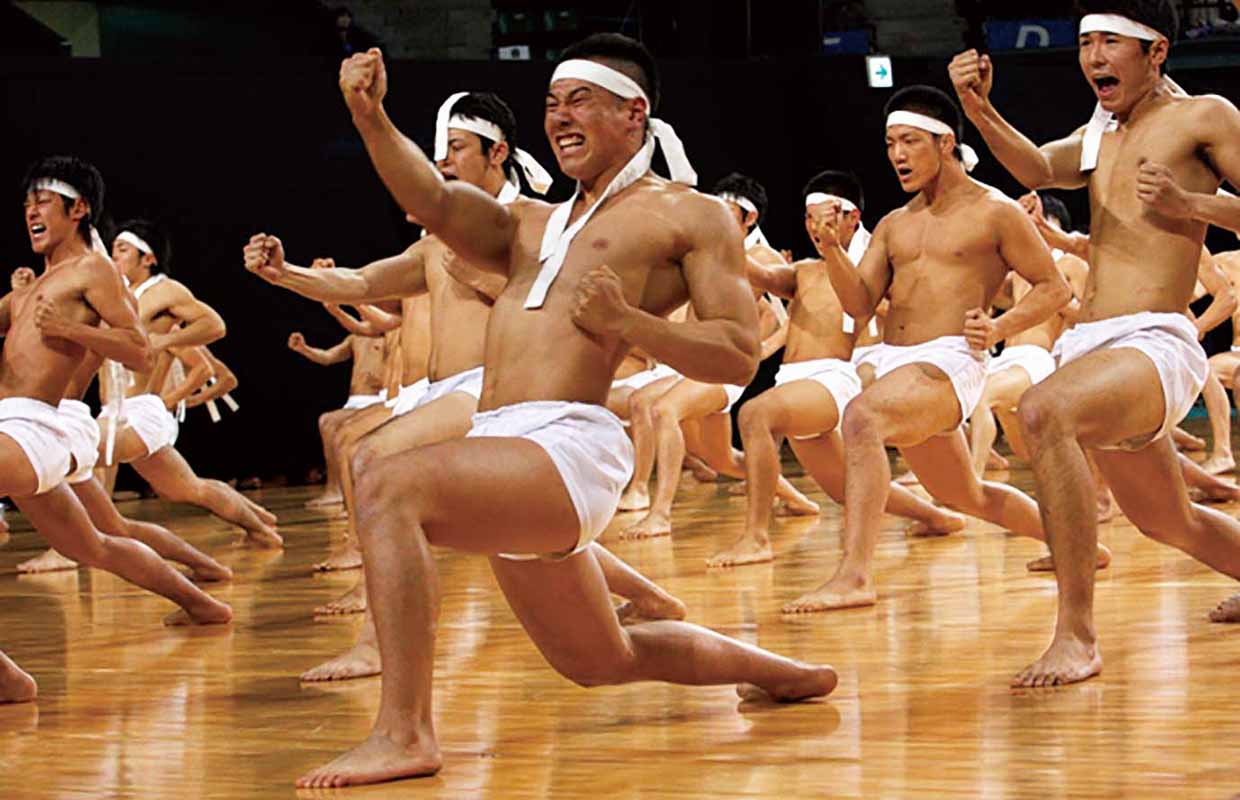
NSSU’sunique style of cheering Essassa is perfected.
Essassa was invented by Hajime Hirai, who was a student attending the institution at the time, inspired by the piston-lodge-arm-motion running technique introduced from the U.S.This unique cheering routine would be passed down through generations while being rearranged to suit the time, and has settled in its current form, which is said to represent a pride of lions roaring up toward the moon in moonlight.
Promotion to Nippon Taiiku SenmonGakko(Nippon Professional School of Physical Education)
As the Showa era began,Taiso-Gakko’sstatus was promoted from miscellaneous school to professional school, which fueled the institution’s desire to eventually become a university.As the institution outgrew the campus at the time, Nippon Taiikukai Taiso-Gakko relocated to its current location in Fukasawa, Setagaya-ku in 1937 (Showa 12) and switched to incorporated foundation status in 1940 (Showa 15). In 1941 (Showa 16), the institution finally achieved its long-held goal of becoming Nippon Taiiku Senmon Gakko (Nippon Professional School of Physical Education).
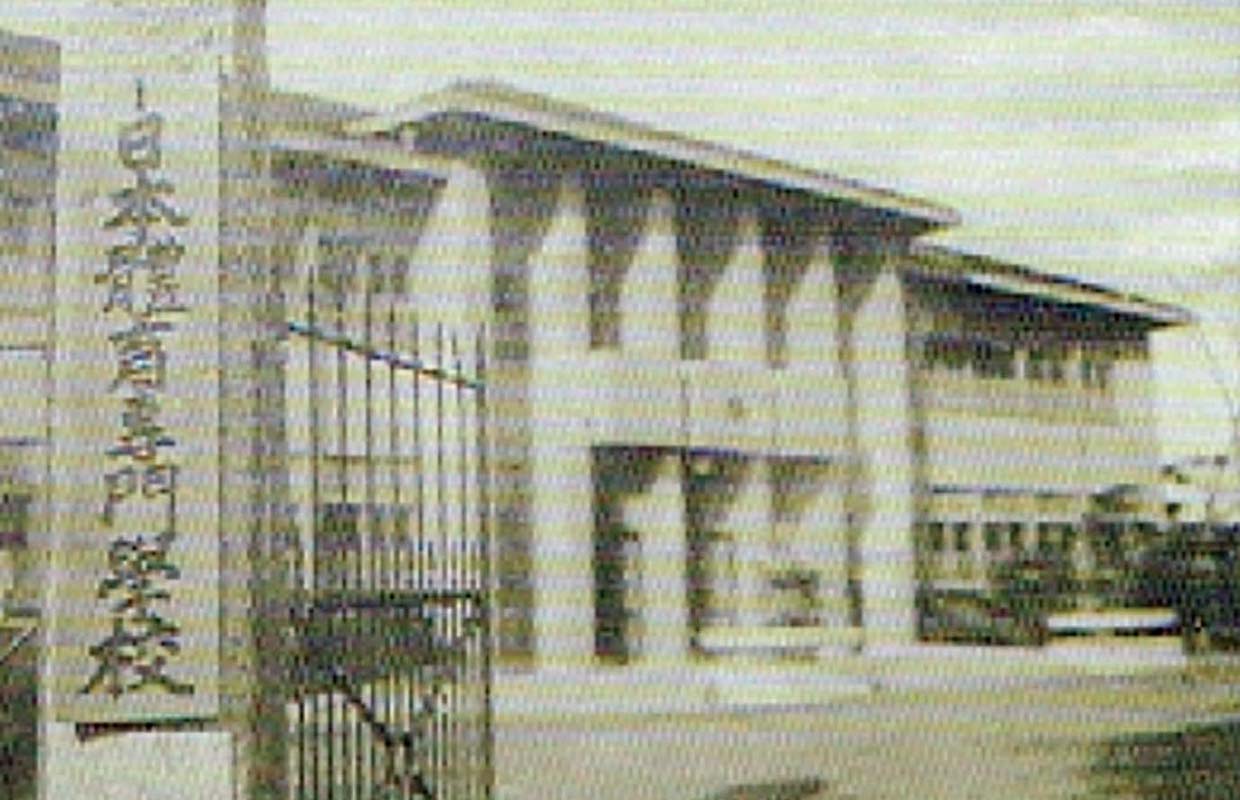
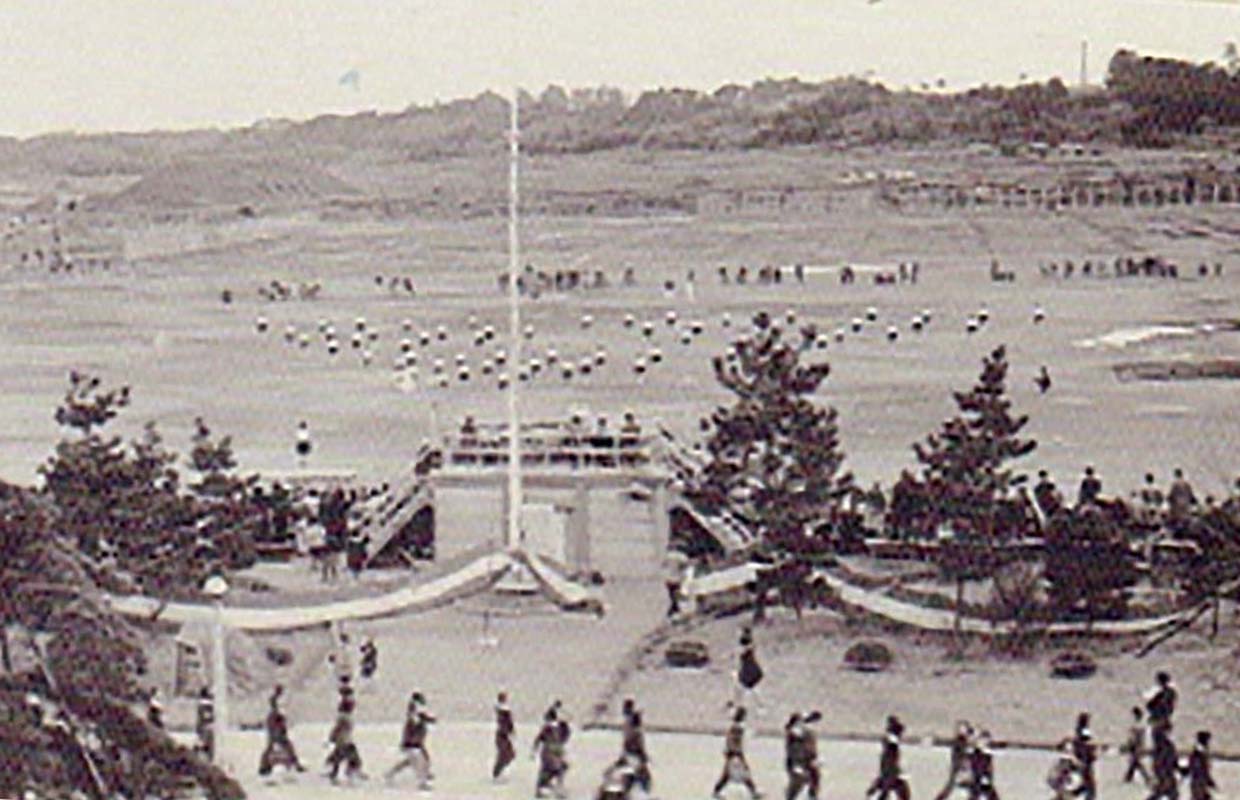 *Photo of the school ground from the institution’s Tsuchiura era.
*Photo of the school ground from the institution’s Tsuchiura era.
Relocation to a former naval aviation base in Tsuchiura-shi, Ibaraki-ken
Nippon Sport Science University (NSSU) is established.
The war had finally ended. However, the major bombing of Tokyo that occurred in 1945 (Showa 20) caused severe damage to Nippon TaiikuSenmonGakko’sfacilities in Fukasawa, Setagaya-ku with no clear possibility of recovery in sight. Given the situation, the institution had to move to a site in Ami-machi, Tsuchiura-shi, Ibaraki-ken in 1946 (Showa 21), where there used to be a naval airbase, marking the beginning of the institution’s Tsuchiura era that would last five years. In 1949 (Showa 24), the institution was approved to switch to university status under the new system, and shortly after Nippon Sport Science University (NSSU) was founded. While NSSU had its beginning as a single-faculty college and only had the Faculty of Sport Science consisting only of the Department of Physical Education, it was nevertheless eager to train its students to become competent physical education instructors that would meet the needs of the new era. However, NSSU was only able to enroll a total of 64 students in its first year of operation, because of its remote location away from Tokyo.As the nation would steadily build itself back in the post-war era,NSSU’splan to move back to its previous campus in Fukasawa, Setagaya-ku gained momentum, and the relocation finally occurred in 1951 (Showa 26). From that point on, NSSU was suddenly able to attract a large number of applicants again every year, which allowed the institution to conduct educational and research activities more steadily and regain solid financial footing.
As Japan entered its period of rapid economic growth in the late Showa30s, NSSU would create a series of new academic departments to adapt to the changing social needs, starting with the Department of Health Science in 1962 (Showa 37).
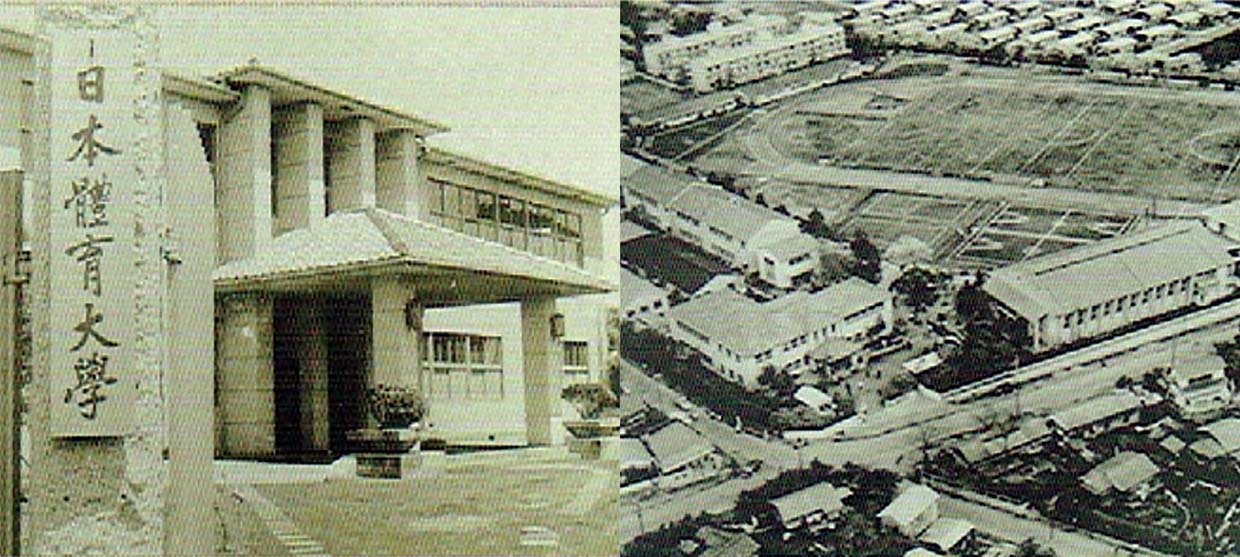 *Photos of the Tokyo Setagaya campus
*Photos of the Tokyo Setagaya campus
Left: Main gate Right: View of the entire campus
Relocation back to the old Nippon Taiiku Senmon Gakko campus in Fukasawa, Setagaya-ku
The current design of the university emblem is adopted.
On September 20, 1949 (Showa 24), NSSU began its new chapter as a university under the new system. While the first design of its insignia (school emblem) had “大學(university)” in the center flanked by “體(physical)” and “育(education)” on either side, it was rearranged in 1952 (Showa 27) to the version that has been in use to this day. This emblem is incorporated into the official university flag as well as into the flags of various student organizations. NSSU also has several other official marks, including the symbol mark adopted in 1955 (Showa 30), and also the logo mark and the symbol mascot that were selected by vote in 2006 (Heisei 18).

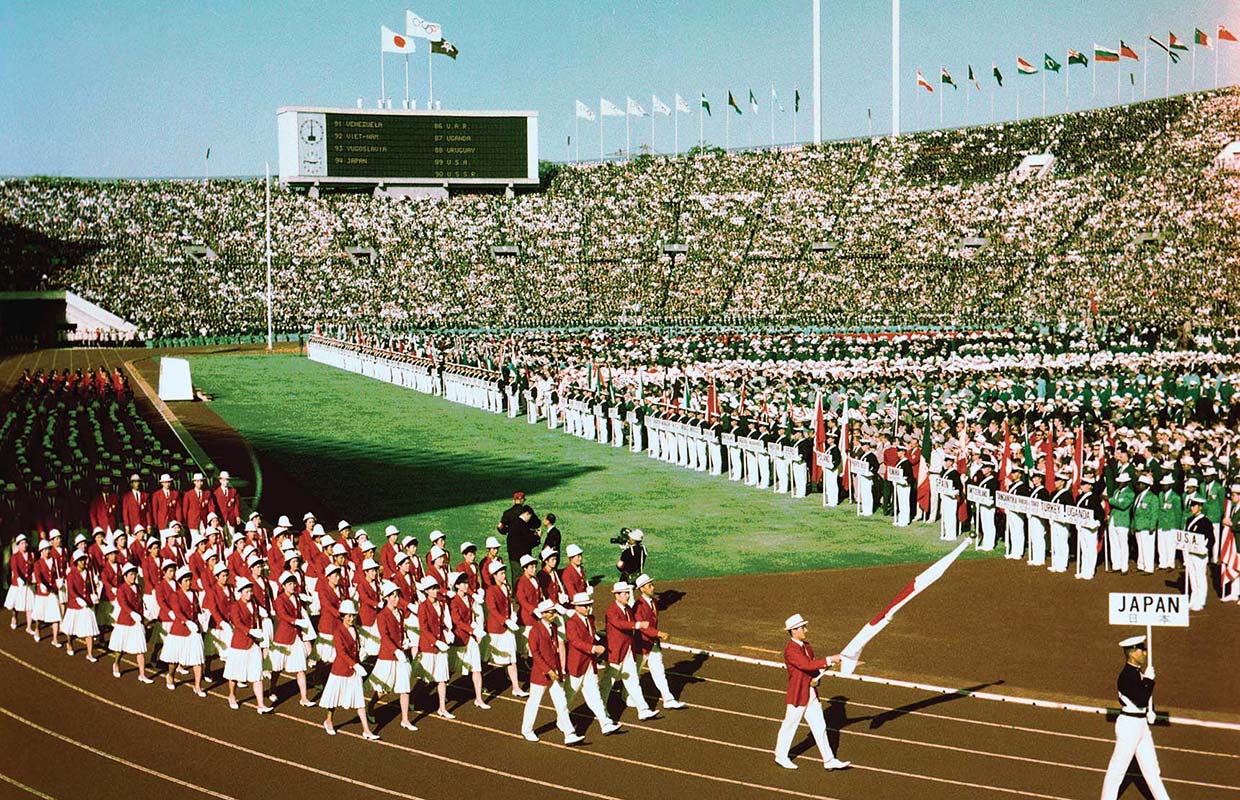
Tokyo Olympic Games
NSSU gives its full support to the Tokyo Olympics.
In the post-war era,NSSU’sprimary focus was initially on the training of its students to become physical education instructors, as its development of top athletes and competitive sports instructors more or less was relegated to a secondary
role.
However, this principle would all change once Tokyo was officially selected as the host of the Olympic Games in 1964 (Showa 39). People across Japan would experience a strong sense of excitement and exhilaration, as they cheered on their fellow Japanese athletes that competed triumphantly in gymnastics, judo, wrestling, women’s volleyball, marathon, etc. Meanwhile, NSSU offered its full support to the sporting events utilizing all its available resources, by sending many of its students, faculty, and staff members to help during the opening ceremony, and to serve as supporting on-site personnel throughout the events.
The Olympic experience drastically transformed people’s view of sport and its practice across the nation as well as at NSSU, so much so that NSSU would revise its policy and fully commit to the development of top athletes and competitive sports instructors. The rest is history, as NSSU would go on to produce Olympic medalists and competitors more than any other universities by far.
Shortly after the 1964 Olympic Games had ended, NSSU changed how its name would be pronounced, i.e., the “N” in the name would stand for “Nippon” instead of “Nihon” (both denoting Japan but with different sounds). The change was a sign ofNSSU’srenewed commitment to becoming the leading university that would represent Japan on the world stage in sports, as the country would be referred to as “NIPPON” or “JAPAN” in international competitions.
Teaching Credential Course in Physical Education is inaugurated.
Yokohama Kenshidai Campus ground opens.
NSSU management decided that the institution would need an additional campus to have more exercise facilities and improve its athletic clubs, as NSSU was outgrowing the Setagaya Fukasawa campus due to its increasing student enrollment, plus it would be
advantageous to expand its space where top athletes and competitive sports instructors could be trained.
Then in 1968 (Showa 43), NSSU purchased a large plot of land that had an area of 37,700tsuboinKamoshida-cho, Midori-ku, Yokohama-shi and broke ground on its new athletic facilities, which would becomeNSSU’sKenshidai Campus.
During the construction project, the facilities that were first built were the athletics field, the baseball field, the rugby field, the soccer pitch, the tennis courts, the archery range, the volleyball courts, and the handball courts, after which the gymnastics arena fully dedicated to the sport, the administration building, and other facilities were also constructed.
The name “Kenshidai” was given by Ukichi Yonemoto, who was the Presidentof Nippon Taiikukai at the time, which is comprised of the kanji “健(kensignifying health),”“志(shisignifying learning, also one of the characters taken from the name of the local town ofKamoshida-cho),” and “台(daimeaning a hill).”
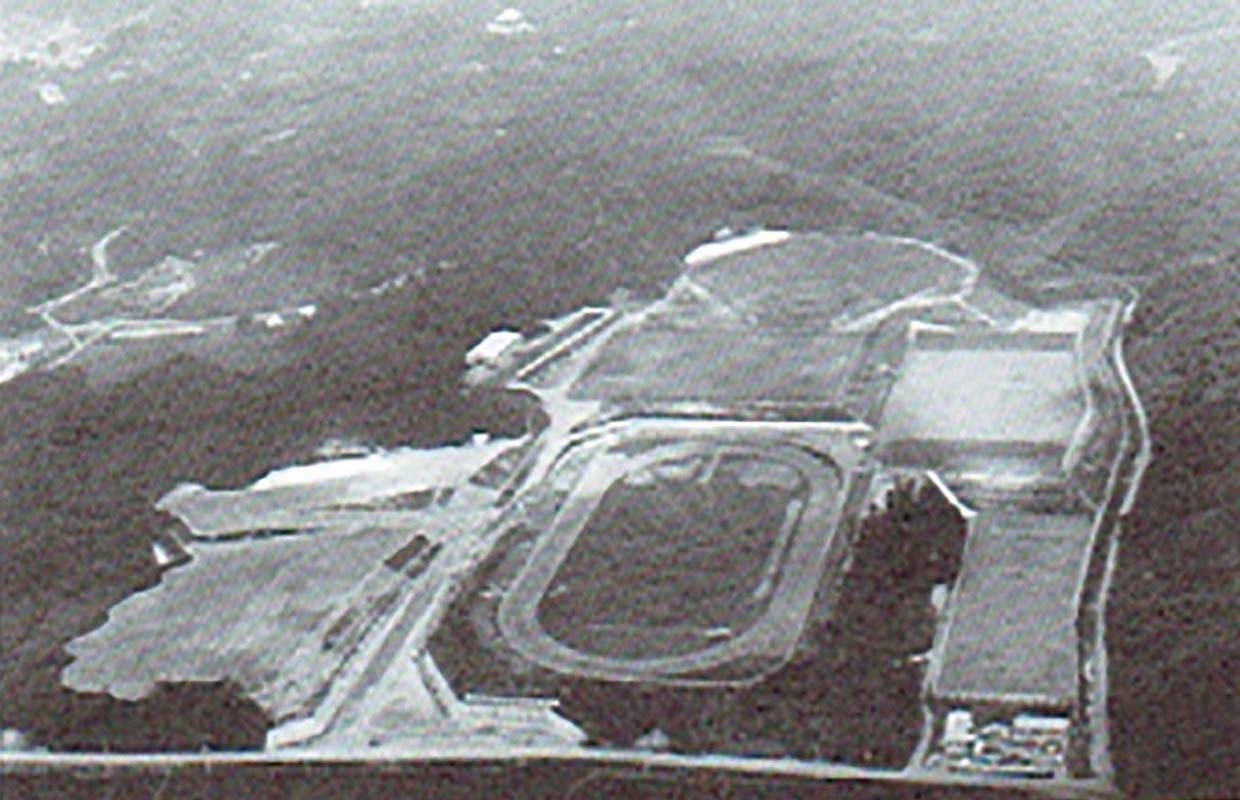 *Photo of the entire Yokohama Kenshidai Campus ground
*Photo of the entire Yokohama Kenshidai Campus ground
